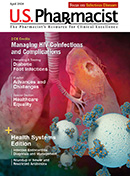Moderna, Inc. announced the completion of its regulatory application to the FDA for its updated COVID-19 vaccine containing spike proteins for the XBB.1.5 sublineage of SARS-CoV-2 (mRNA-1273.815).
Stéphane Bancel, CEO of Moderna, stated, “The agility of our mRNA platform has enabled us to update Spikevax, Moderna's COVID-19 vaccine, to target XBB variants with speed and clinical rigor.” Mr. Bancel added, “We have been working diligently for months to build ample supply, with doses ready to ship for the fall vaccination season in the Northern Hemisphere. In addition, our preliminary clinical testing has demonstrated that mRNA-1273.815 is effective in generating an immune response against the current XBB variants of concern. Over the past three years, Spikevax has consistently reduced hospitalizations and severe disease outcomes from COVID-19, and we encourage individuals to speak to their healthcare providers about receiving an updated vaccine.”
The submission is based on guidance from the FDA, which advised that COVID-19 vaccines should be updated to a monovalent XBB.1.5 composition. This aligns with other regulators and global public health agencies, which have likewise recommended a monovalent XBB composition.
At the recent Vaccine and Related Biologicals Products Advisory Committee, Moderna was the only company to submit preliminary clinical data comparing monovalent and bivalent vaccines and demonstrating robust human immune responses across multiple XBB descendent sublineages such as XBB.1.5, XBB.1.16, and XBB.2.3.2.
The most common solicited local adverse event for Moderna’s updated COVID-19 vaccine was injection-site pain. The most common solicited systemic adverse events include headache, fatigue, myalgia, and chills.
Moderna is also introducing additional applications to regulators around the globe and is prepared to deliver updated COVID-19 vaccines in time for the fall vaccination season.
The content contained in this article is for informational purposes only. The content is not intended to be a substitute for professional advice. Reliance on any information provided in this article is solely at your own risk.
« Click here to return to mRNA Technology Update.






